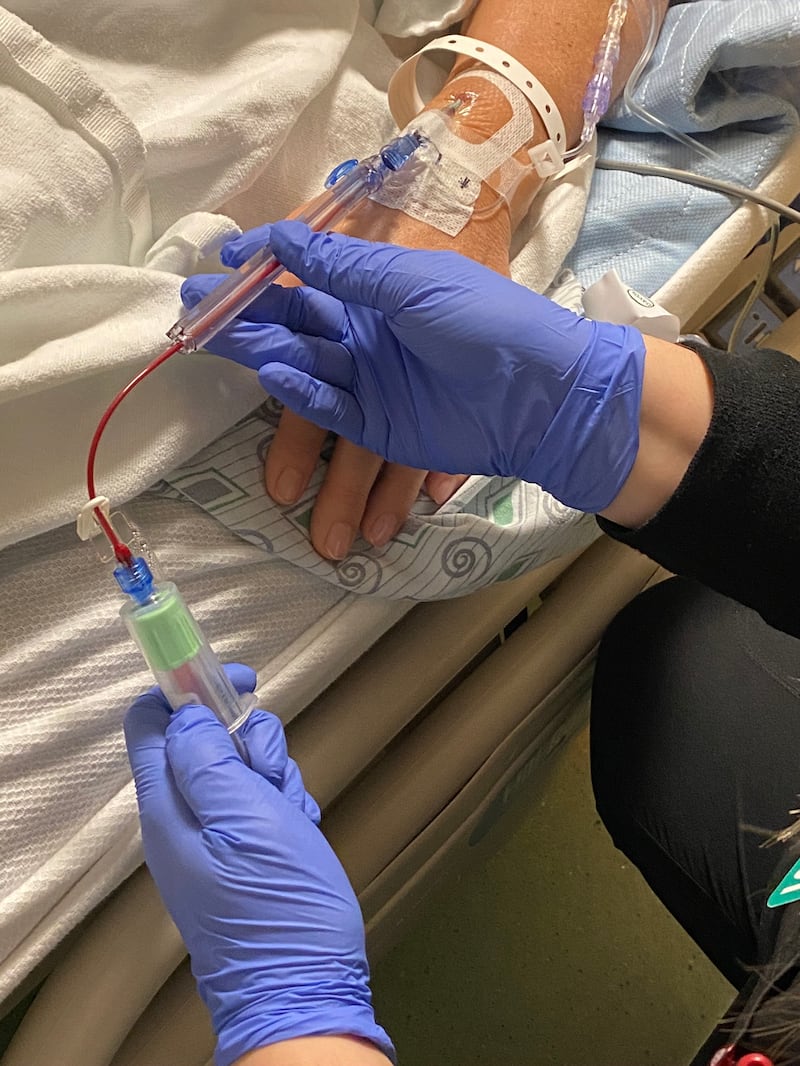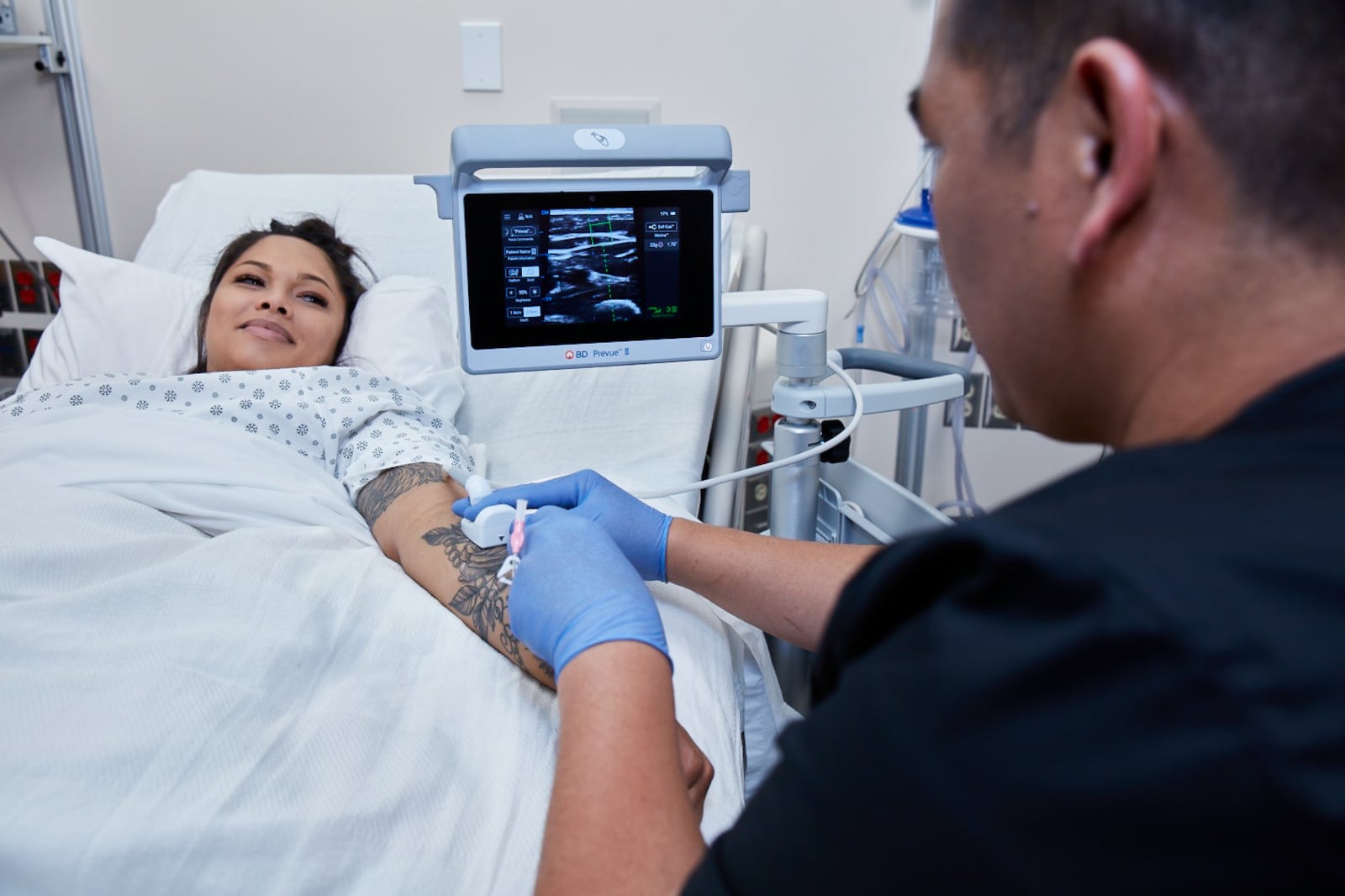Photo courtesy of Becton, Dickinson and Company
Despite being among the most common procedures in a hospital, needlesticks can frequently require several attempts, often causing pain and discomfort for patients. Catheter insertions, for example, can be particularly distressing, according to the Association for Vascular Access (AVA). At worst, the group has argued, it can even deplete the vessel if a vein is not found quickly, leading care providers to rely on even more invasive insertion methods. Becton, Dickinson and Company (BD) hopes to remedy this through needle-free technology.
“Imagine going to the hospital—likely already a dreaded experience—and then being poked by needles 10 times or more each day you are there. That’s a reality for many patients today,” says Jeff Stevens, vice president and general manager of peripheral IV catheters and Utah site business leader for BD. “Now, think about how much better that experience could be if you needed just one needlestick for your entire stay. That’s the vision that we’re working toward at BD.”
A 2021 research paper by the AVA argued that part of the problem stemmed from the fact that catheter insertion training varied widely from hospital to hospital. BD offers vascular access training and education to clinicians to help ensure the company’s technologies are driving first-stick success and elevating the patient experience.
“It starts with getting a peripheral IV line placed successfully on the first attempt and using ultrasound placement systems based on a patient’s needs, then using that line to not only deliver necessary fluids and medications but also for needle-free blood draws,” Stevens explains. “These are the types of innovative technologies we’re developing in Utah to help reduce the pain and anxiety patients often feel from repeated needlesticks while providing clinicians with workflow efficiencies and confidence.”

Photo courtesy of Becton, Dickinson and Company
These two new technologies are called the BD Prevue™ II System and PIVO™ Needle-free Collection Device and are part of BD’s campaign to create a “one-stick hospital stay.”
“Many patients have difficult intravenous access, meaning they have vessels that you can’t visualize or touch,” says Phil Prentice, who leads BD’s advanced access devices portfolio based in Utah. “This can lead to more needlesticks, which can in turn lead to vessel damage and other complications. Ultrasound placement and needle-tracking systems can help reduce the number of attempts and time to successful vessel access leading to a potentially safer and easier procedure for clinicians and patients.”
BD has been located in Utah for nearly 70 years, with a manufacturing plant in Sandy and business office in Salt Lake City. The company has invested millions into its growth in recent years. Locally, the company has specialized in products related to vascular access devices and technology to support and administer the infusion of medication and other therapies, as well as needle-free blood draws.
“By potentially removing multiple, individual needlesticks from blood draws, we can change the decades-old practice and help transform it into a better experience for patients and providers,” said Anna Kiger in a press release. Kiger is the chief nursing officer for Sutter Health, a California health system that first implemented the needle-free technology in 2016. “What can be an unpleasant or anxiety-inducing procedure, with multiple pokes and prods throughout the day and night, is now a more compassionate one for those in our care,” Kiger said.

